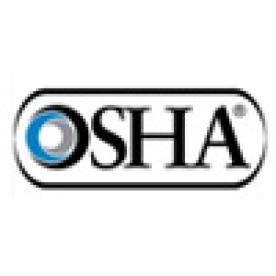Manufacturers and importers of hazardous chemicals may release their existing stock into commerce under former requirements imposed by the Occupational Safety and Health Administration’s Hazard Communication Standard (HCS) for labelling and fact sheets, provided these businesses can show they have made reasonably diligent and good faith efforts to obtain information to comply with new requirements that went into effect June 1, OSHA stated in a May 29 memorandum described as an “interim policy.” The agency added that this guidance also applies to distributors if those entities cannot meet their compliance deadline of December 1, 2015. The memorandum can be found here.
OSHA plans to issue a revised HCS compliance directive soon, replacing the May 29 memorandum as well as a policy document the agency released on February 9. The issuance has been delayed to allow OSHA time to provide “additional clarification” following “an overwhelming number of additional questions and requests” the agency has received on behalf of manufacturers, importers, and distributors since the February release. According to OSHA, many of the questions relate to the use of HCS 1994-compliant labels on containers already packaged for shipment.
OSHA industrial hygienist Mike Pannell said on June 10 that the directive has been reviewed and approved and is in “the final signature stages just prior to publication.” He did not provide a release date.
OSHA updated its HCS in 2012 to conform to an international standard. The amended, or “globally harmonized,” HCS includes provisions requiring chemical manufacturers and importers to apply specific criteria to address health and physical hazards when determining the hazards of the chemicals they produce or import. Container labels also must provide hazard information in designated ways and Safety Data Sheets (SDS) must present hazard information in a consistent format. OSHA set the compliance deadline for June 1, 2015, for chemical manufacturers and importers. Distributors were allowed to ship hazardous chemicals under the old system until December 1, 2015.
According to the May 29 memorandum, manufacturers or importers who have not received classification information from their upstream suppliers by June 1 may continue to use the HCS 1994 label. However, OSHA will only allow this if these entities can provide “persuasive documentation” to an OSHA compliance officer that they have made reasonable efforts to obtain the necessary information from upstream suppliers and attempted to find hazard information from alternative sources, such as chemical registries. This guidance also applies to businesses holding hazardous chemical stock packaged before June 1.
“In these limited situations, manufacturers and importers must promptly create HCS 2012-compliant labels within six months after they develop the updated SDS,” the memorandum stated. “All containers shipped after the six-month period must be labeled with an HCS 2012-compliant label.”
The agency made clear that after June 1, a manufacturer or importer of hazardous chemicals who packages containers for shipment must label every container with a HCS 2012-compliant label prior to shipment.
The memorandum provides nearly identical guidance to distributors. That is, distributors, including those with existing packaged stock, who are noncompliant by December 1 because a manufacturer or importer could not meet the June deadline, also must demonstrate reasonable diligence and good faith.
After December 1 or upon request, distributors must provide a HCS 2012-compliant label and SDS for every individual container that is part of any future shipments, unless they can demonstrate reasonable diligence and good faith, the memorandum stated. Additionally, distributors must provide HCS 2012-compliant SDSs to downstream users with the first shipment after a new or revised SDS is provided by the manufacturer or importer. All containers in the control of a distributor after December 1, 2017, must have HCS 2012-compliant labels prior to shipping.
The memorandum repeats nearly verbatim the steps listed in the February 9 memorandum considered by OSHA to represent reasonable and good faith efforts to obtain the necessary classification information.
The business community has criticized OSHA’s approach, preferring instead that the agency adopt a policy of accepting labels which were compliant at the time the container holding a hazardous chemical was filled, for the life of the product in that container. This would address what industry sees as an ongoing compliance problem in that the life of products is much longer than the six-month compliance period to update labels and data sheets based on new data from suppliers.
Despite industry’s compliance concerns, OSHA has begun exploring another new rule to realign the U.S. hazardous chemicals classification and labelling system with the evolving international system.





 />i
/>i